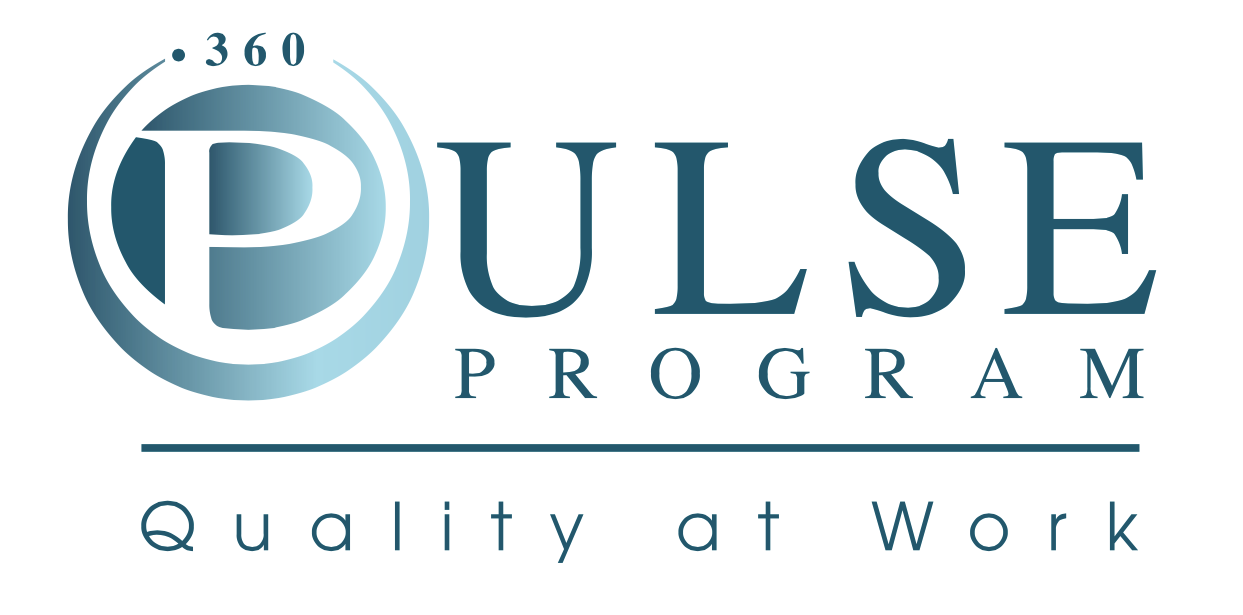 We are all about using quality feedback to improve quality of care. The PULSE Program is committed to helping healthcare providers obtain the kind of high-caliber feedback that will enable them to improve practice and teamwork skills. Our PULSE 360° Surveys, educational modules, and coaching programs are designed to help facilities, physicians, practitioners, nurses, and other healthcare management and staff to develop more effective professionalism, interpersonal and communication skills, and quality of care behaviors in order to maximize patient safety and satisfaction. Our PULSE family of surveys provides a variety of tools for assessing these objectives.
We are all about using quality feedback to improve quality of care. The PULSE Program is committed to helping healthcare providers obtain the kind of high-caliber feedback that will enable them to improve practice and teamwork skills. Our PULSE 360° Surveys, educational modules, and coaching programs are designed to help facilities, physicians, practitioners, nurses, and other healthcare management and staff to develop more effective professionalism, interpersonal and communication skills, and quality of care behaviors in order to maximize patient safety and satisfaction. Our PULSE family of surveys provides a variety of tools for assessing these objectives.
The PULSE 360 Survey System drives a highly automated, anonymous, web-based 360° survey feedback process widely used throughout North America. Our goal is to help healthcare organizations achieve a culture change that leads to significant and sustained increase in physician and practitioner professionalism as well as improved quality of care and caring. Effective performance feedback systems help the “not-as-good” get to good, the good to great, and the great to greater.
Over 15,000 physicians and healthcare professionals have received PULSE feedback from nearly 1,000,000 surveys from about 700 academic medical centers, community hospitals, practice groups and clinics across the United States and Canada, including many well-known institutions such as Johns Hopkins, seven Harvard hospitals (Massachusetts General Hospital, Brigham and Women’s, Boston Children’s Hospital, etc.), and the Universities of: California San Diego, Miami, Michigan, Minnesota, Utah, etc. Hospitals across Canada include, for example: McGill University Health Centres, University of Ottawa, University Health Network (University of Toronto), Hospital for Sick Kids, and Alberta Health Services, etc.
 The overarching purpose of the PULSE 360 survey and development system is, simply put, quality culture change. Our goals are:
The overarching purpose of the PULSE 360 survey and development system is, simply put, quality culture change. Our goals are:
- Awareness—Formal feedback increases both self-awareness and accountability, and it drives improvement.
- Prevention/Early Identification—Feedback system help: prevent problems by providing an opportunity for self-correction, provide an early warning sign for emerging problems so they can be quickly addressed and resolved, assess progress for those in working on professional development, communicate through survey questions what behaviors the organization values, and, most importantly, acknowledge and validate those who are doing well to support and sustain their engagement, motivation, and quality of care.
- Improvement—Improving quality of care and caring occurs when ongoing performance feedback systems help the “not-as-good” get to good, the good to great, and the great to greater.
PULSE 360° Survey System Outcome Goals
- Increase in self-awareness
- Acknowledge/appreciate what physicians, leaders, and staff are doing right
- Increase engagement, motivation, and morale
- Give credible feedback to help participants to self-correct earlier
- Provide more specific information to understand the “why’s” behind complaints
- Communicate to all team members who receive surveys the behaviors that the organization values and expects
- Identify and coach those who are more vulnerable to receiving patient complaints
- Improve practice, communication, teamwork, leadership skills
- Communicate technical, professionalism, and leadership expectations to both physicians and staff
- Provide helpful feedback to improve quality
- Develop teamwork and leadership skills by helping the “good” become “great”
- Prevent potential problems with “early warning” feedback
- Validate the “leadership role models” by acknowledging/reinforcing the best
- Reinforce improvement with ongoing feedback
- Reduce medical errors, malpractice claims, association liability
- Improve patient satisfaction
To learn more, call us at:
-
305-285-8900 (US)
-
416-800-9203 (Canada)

